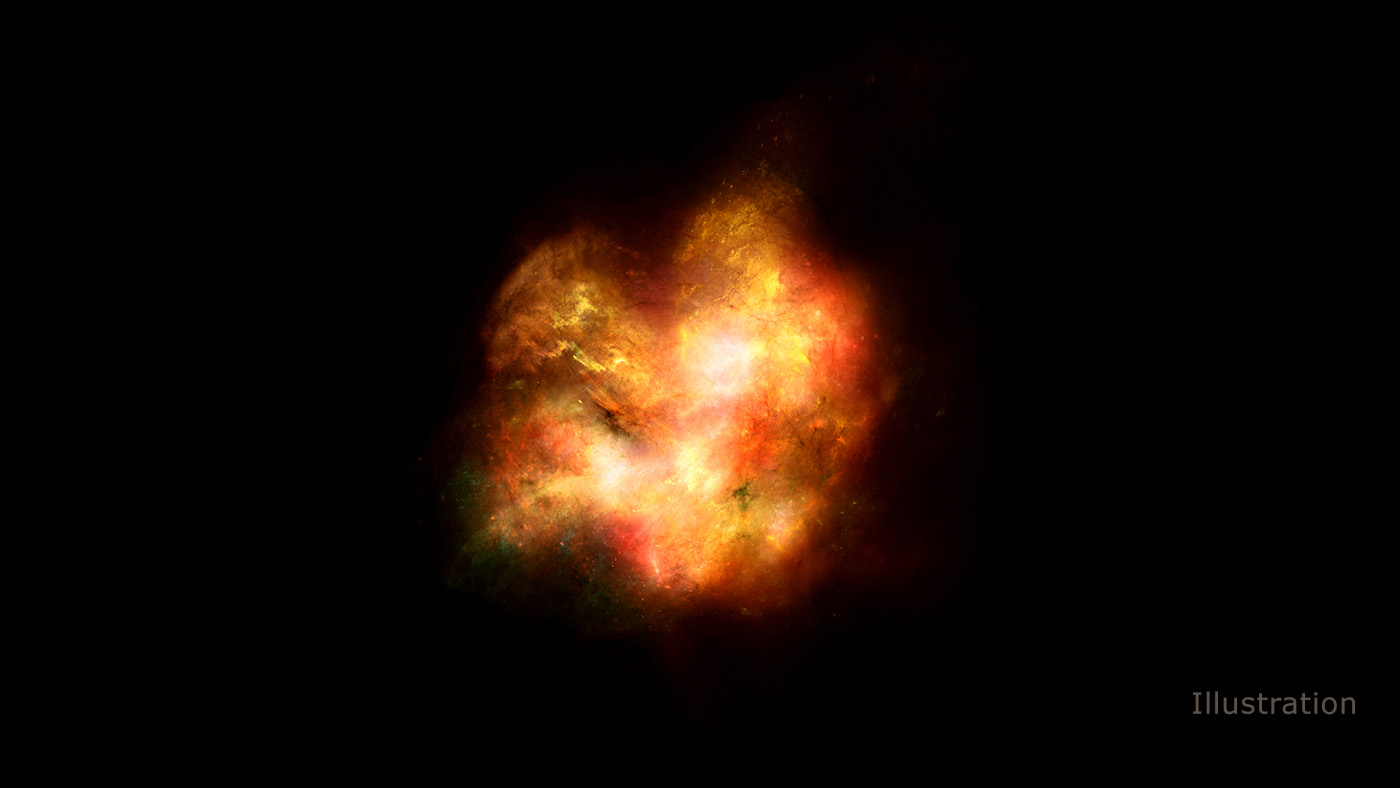A large sampling of the first galaxies to have formed in the early universe reveals that these vast collections of stars and gas shone brighter than their modern-day counterparts. The discovery provides vital new clues about how the cosmos underwent a transition, known as the Epoch of Reionization. By about a billion years after the big bang, the universe had gone from being suffused with neutral hydrogen gas to a plasma—a state of ionized gas that has persisted over the rest of the universe's 13.8-billion-year lifetime. Astronomers have long sought to explain the source of this cosmic-spanning transformation. See also: Astronomy; Big bang theory; Galaxy; Galaxy formation and evolution; Gas; Hydrogen; Ionization; Plasma (physics); Universe

The new observations came from NASA's Spitzer Space Telescope, which studies the universe in infrared light. Spitzer took deep, 200-hour-long views of two regions of the sky, gathering light that had first been emitted by young galaxies more than 13 billion years ago. In total, the Spitzer team observed 135 distant galaxies, finding them to be unusually bright. Although previous studies had documented similarly bright, early galaxies, the number of galaxies seen in those studies amounted to only a smattering. The small sample size thus left open the possibility that those galaxies observed were merely statistical outliers from the then-cosmic norm. See also: Electromagnetism; Infrared radiation; Light; Spectrum; Spitzer Space Telescope; Statistics
Across the newly obtained, large sample size of galaxies, Spitzer measured high brightness in a couple of infrared wavelengths associated with energetic radiation interacting with hydrogen and oxygen gases. This radiation's source is newly formed, massive stars composed mostly of light chemical elements. Such behemoth stars are found infrequently in the modern universe, but theory suggests that they could have been commonplace in the still-young cosmos. See also: Chemical element; Oxygen; Radiation; Stellar evolution
Indications that this kind of star was indeed typical in early galaxies further provides a rich source of the energetic radiation that would have contributed significantly to the Epoch of Reionization. These stars would have emitted copious amounts of high-energy radiation, such as ultraviolet light, x-rays, and gamma rays, all of which would have ionized any neutral hydrogen gas they encountered. Other radiation sources, such as quasars—the cores of galaxies where supermassive black holes gobble up on matter and pump out tremendous energy—surely also played a role in the Epoch of Reionization. But now, with a certain kind of star's role more thoroughly demonstrated, astronomers are making progress in accounting for the various factors that fundamentally transformed the universe. See also: Black hole; Energy; Gamma rays; Quasar; Star; Ultraviolet radiation; X-rays





